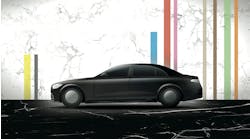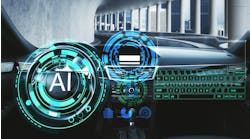Richard Perry discovered his love of cars as a 15-year-old, while helping a friend’s dad restore a 1955 Chevy. High school auto body classes led him to the collision repair industry, and he spent the next 15 years working for various shops in his hometown of Amarillo, Texas. In 1996, he accepted a position with Chief Automotive Technologies and relocated to train at the company’s Toledo, Ohio, facility. Now the manager of Training and Industry Affairs, Perry shares his knowledge of frame straightening
equipment and speculates on how frame repair may evolve.
What are the most interesting developments occurring in frame repair technology?
With auto manufacturers incorporating more advanced steels and bonding, along with composite materials, we have to stay on top of the changes. When OEMs look at new designs, changes are usually four to six years out; the prototype is built two to three years before the release_notes date. If we’re not in with these companies during testing, we’re at a huge disadvantage as a provider.
The other problem I see is not having the right training and not getting the right people trained. Technical training is so advanced today.
What concerns should repairers have when working with frame machinery with new metals?
Alternative materials will have an affect on the entire industry in that a lot of what some refer to as advanced steels have a one-time use from the manufacturer standpoint. Meaning, once it has served its purpose, it should be replaced. The manufacturers use these metals to save weight and improve quality, but first on their list is passenger safety. More rigid metals better direct the collision forces throughout the vehicle. This allows for a safer vehicle. From a repair standpoint, this creates a more extensive repair for the technician.
Explain the options available to collision repairers for measuring and diagnosing a frame and the required pull to straighten the frame:
There are many methods for measuring, from the latest and greatest computerized to the very basic universal gauges. The one thing that is required for analysis and repair is a way to locate factory reference points for all three dimensions: height, length and width. By pinpointing these critical points, a trained tech will be able to identify damage and to monitor it to make sure it is returned to the correct location if it misaligned. Just as important is to be able to monitor other areas of the vehicle, including the rear if the vehicle is hit in the front. This ensures that no other damage is put in during the repair.
There are several types of computerized measuring systems, including one that uses the latest in laser technology. This system has the ability to measure the entire vehicle simultaneously with multiple locations in real-time measuring. Other systems use a mechanical arm that allows the tech to measure the entire vehicle but only monitor one location at a time during the repair. There is also a system that utilizes sound waves to pinpoint locations along the vehicle with the capability to measure and monitor more than one point at a time. As we get into the mechanical and dedicated system, there are pointers, or jigs, that have to match the reference point in reference to a bench or rack. The universal gauges system is a very visual system that relies on the technician’s visual ability to realign the vehicle.
If a shop is considering purchasing frame straightening equipment, what should it keep in mind?
Each shop will have to look at the right fit for its workflow. The system needs to be able to perform multiple pulls using electric-over-hydraulic for a more precise and constant pull. The machine needs to have enough power for the pulling required to remove the stressed areas around advanced steels. The equipment needs to be versatile so it adapts to all types of vehicles and damage situations.
From a technician’s perspective, it has to be easy to use, dependable and serviceable—meaning that there will be parts for the system if needed and a service force that knows the system if repairs are needed. The ability to work at variable heights is always a plus for some techs, but having a superior product that can do the other things day in and day out is of greatest importance.



